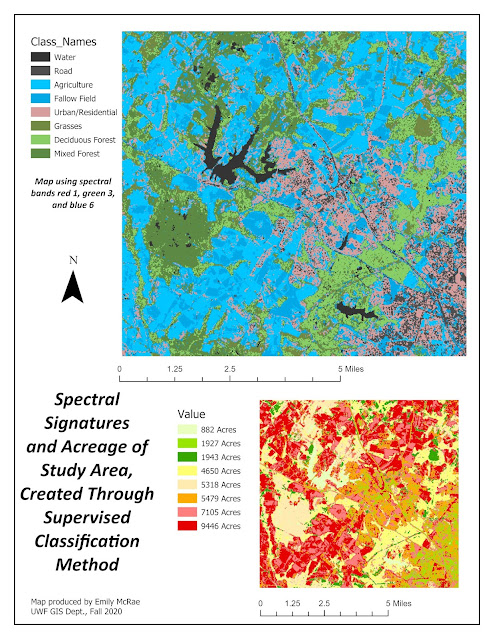GIS 6005 - Lab 5 - The Relationship between Premature Death & Child Poverty
For my map, I am using a purple color scheme across all of my map elements. It is a dark, but relaxing color and is also associated with cancer, mental health, and suicide awareness.
My maps are sharing a color ramp, and the color ramp is also reflected on my scatter plot. The legend for the two maps is joined into one single legend with definitions on both sides.
I places my maps on the left pane, taking up half the available space, and my infographics are on the right. I have stacked them together and they are grouped according with whether they represent poverty statistics or premature death.
I have added a pie chart to show the percent of children living in poverty. Beneath that is a table with child poverty rates broken out by race, listed in order from highest to lowest rate.
Beneath that, the infographics move into the life expectancy. I have a line graph spanning from 1990 to 2012, showing the life expectancy trend for the whole population, broken out by sex, and broken out by white and African American. To the right of this, I have a list on the top 10 causes of death.
I have chosen to include information for the different races because ethnic minorities are more likely to live in poverty and to die prematurely, though white populations would make up a larger percent of the entire population, their rate is lower.
I put my sources in the bottom right corner in small text.




Comments
Post a Comment